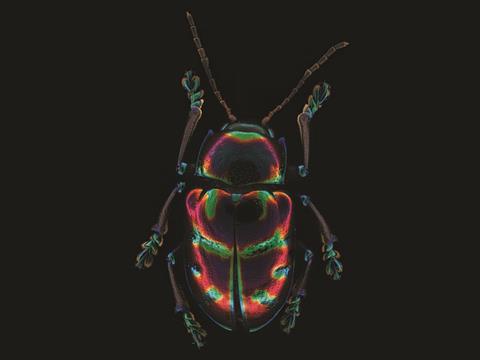With more than 50,000 described species, the leaf beetle family is distributed worldwide and represents about a quarter of the species diversity of all herbivores. Leaf beetles can be found to feed on almost all plant groups. They live in the rhizosphere, the canopy and even underwater.

Many leaf beetles, such as the Colorado potato beetle, are notorious pests. Their species richness and global distribution highlight their evolutionary success, which is particularly astonishing given that leaves are a difficult food source to digest and provide unbalanced nutrients.
Researchers from the Department of Insect Symbiosis at the Max Planck Institute for Chemical Ecology in Jena and the Mutualisms Research Group at the Max Planck Institute for Biology in Tübingen, Germany, have now asked how leaf beetles have overcome these dietary challenges throughout evolution. Do different leaf beetle species use the same strategy, or have they found other ways to achieve their nutritional goal?
Foreign genetic material
Almost all leaf beetles have incorporated foreign genetic material into their genome, which is responsible for the production of enzymes necessary to digest plant cell wall components. For example, pectinases are enzymes that break down pectins – indigestible dietary fibers for humans, but metabolized by many bacteria.
READ MORE: Hidden partners: Symbiodolus bacteria found in various insect orders
READ MORE: Bacterial duo feed cuticle in wood-eating beetles
Approximately half of the species of leaf beetles live in close association with symbiotic bacteria. These symbionts provide the beetles with important digestive enzymes to help them break down food components. They often also provide the beetles with vitamins and essential amino acids.
The researchers know from their own previous studies that the beetles use both pectinases from their own genome and those encoded by symbionts. “These digestive enzymes are essential for the beetles’ survival. However, we only have a fragmentary understanding of which beetle species need symbiotic bacteria for digestion, which do not, and where the beetles’ pectinases come from. We wanted to reconstruct the evolutionary scenarios that led to today’s distribution patterns through comparative studies of all leaf beetle groups,” explains first author Roy Kirsch.
Horizontal gene transfer
With the support of national and international colleagues, the team carried out genome and transcriptome analyses of 74 leaf beetle species from around the world. Through this comparative analysis across all leaf beetle subfamilies, the researchers could understand how the current distribution of the beetle’s enzymes and symbiont-encoded enzymes has evolved. “We were also able to demonstrate that horizontal gene transfer, a phenomenon that describes the incorporation of foreign genes from bacteria into the genome, is quite common in leaf beetles. Both symbiosis and horizontal gene transfer have strongly influenced the evolution of insects,” says Roy Kirsch.
The analyses also revealed that the vast majority of the beetle species use either their own pectinases, acquired through horizontal gene transfer, or the pectinases of their bacterial symbionts. However, beetle and symbiont pectinases never occurred together in any beetle species.
“The binary distribution of beetles encoding pectinases within their genomes versus those acquiring them symbiotically remains one of the most striking findings from the study. Such a pattern raises additional questions concerning how horizontal gene transfer and symbiosis have shaped the way beetles consume and process foliage, and the trade-offs associated with outsourcing a key metabolic trait,” explains Hassan Salem, who leads the Max Planck Research Group on Mutualisms.
Dynamic evolution
The results of the study show that the evolution of pectinases is dynamic and characterized by the alternation of horizontal gene transfer and symbiont uptake.
“You can imagine this process as follows: When a symbiosis is established, a beetle pectinase from a previous horizontal gene transfer is replaced by a symbiont pectinase. The advantage of incorporating a symbiont is that its pectinase may have new activities or be more efficient, and the symbiont may also provide additional benefits, such as producing other digestive enzymes or essential nutrients. The beetle’s own pectinase gene is no longer needed and is lost during evolution. As the symbiotic interaction progresses, the symbiont’s pectinase gene may be transferred into the beetle’s genome and the symbiont may be lost, but this process needs to be studied in more detail,” says Martin Kaltenpoth, head of the Department of Insect Symbiosis.
The results show how repeated horizontal gene transfer and the establishment of symbioses with bacteria enabled leaf beetles to rapidly adapt to a plant-based diet, contributing to their remarkable evolutionary success.







No comments yet